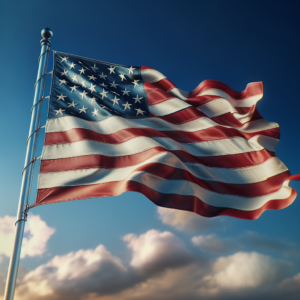In the landscape of American governance, executive orders have emerged as a powerful tool wielded by presidents to effectuate policy changes and address pressing issues. While these directives can streamline decision-making and implement reforms swiftly, they also ignite debates about their implications for democracy and the balance of power. This article delves into the multifaceted nature of executive orders, exploring their definition, legal framework, role in policy implementation, controversies, and their evolving significance in the political arena.
Understanding Executive Orders: Definition and Historical Context
Executive orders are formal directives issued by the President of the United States to manage the operations of the federal government. They serve as a means for the executive branch to enact policies without the need for congressional approval, allowing for swift action in times of crisis or when legislative gridlock occurs. The historical roots of executive orders can be traced back to the early years of the republic, with President George Washington issuing the first recorded order in 1789. Over the centuries, the use of executive orders has evolved, reflecting the changing dynamics of American politics and the increasing complexity of governance. Notable examples include President Franklin D. Roosevelt’s New Deal initiatives and President Abraham Lincoln’s Emancipation Proclamation, both of which underscored the potential of executive orders to drive significant societal change.
The Legal Framework: Constitutional Basis for Executive Orders
The constitutional basis for executive orders is derived from Article II of the U.S. Constitution, which vests the executive power in the President. This article grants the President the authority to ensure that laws are faithfully executed, thereby providing a legal foundation for the issuance of executive orders. However, the scope of this power is not explicitly defined, leading to varying interpretations and applications over time. The Supreme Court has played a crucial role in delineating the boundaries of executive authority, ruling on cases that challenge the legality of specific orders. While executive orders are subject to judicial review, they remain a potent instrument for presidents to assert their policy agendas, often leading to tensions between the executive and legislative branches.
The Role of Executive Orders in Policy Implementation and Change
Executive orders serve as a vital mechanism for presidents to implement policy changes swiftly and effectively. They can address a wide range of issues, from national security and immigration to environmental regulations and civil rights. By bypassing the often lengthy legislative process, executive orders enable presidents to respond to urgent matters and enact reforms that align with their political ideologies. For instance, President Barack Obama utilized executive orders to advance healthcare reforms and immigration policies, while President Donald Trump issued orders to roll back regulations and reshape trade agreements. This ability to enact change unilaterally can be both a blessing and a curse, as it may lead to significant shifts in policy with little input from Congress or the public.
Controversies Surrounding Executive Orders: Case Studies and Examples
The use of executive orders has not been without controversy, often sparking debates about the limits of presidential power and the implications for democratic governance. One prominent case is President Franklin D. Roosevelt’s Executive Order 9066, which authorized the internment of Japanese Americans during World War II. This order has since been condemned as a grave injustice, raising questions about the balance between national security and civil liberties. More recently, President Trump’s travel ban, enacted through an executive order, faced legal challenges and public outcry, highlighting the contentious nature of such directives. These examples illustrate how executive orders can provoke significant backlash and lead to broader discussions about accountability, transparency, and the role of the judiciary in checking executive power.
The Impact of Executive Orders on American Governance and Society
The impact of executive orders on American governance and society is profound, shaping the political landscape and influencing public policy in significant ways. They can catalyze social change, as seen in the civil rights movement when executive orders were used to desegregate schools and promote equal opportunity. Conversely, they can also entrench divisions, as seen in the polarized responses to recent orders on immigration and environmental policy. The ability of executive orders to effectuate rapid change can lead to instability, as subsequent administrations may seek to reverse or modify their predecessors’ directives. This cycle of action and reaction underscores the contentious nature of executive governance and its implications for long-term policy continuity and societal cohesion.
Future Perspectives: The Evolving Role of Executive Orders in Politics
As the political landscape continues to evolve, the role of executive orders is likely to undergo further transformation. With increasing polarization in Congress and the growing complexity of global challenges, future presidents may rely more heavily on executive orders to achieve their policy goals. However, this trend raises important questions about the sustainability of such an approach and the potential for executive overreach. The ongoing debates surrounding executive orders may prompt calls for reform, including clearer guidelines on their use and enhanced oversight mechanisms. Ultimately, the future of executive orders will depend on the interplay between the executive branch, Congress, and the judiciary, as well as the public’s response to the evolving dynamics of power in American governance.
In conclusion, executive orders represent a powerful tool for presidents to implement policy changes and address urgent issues. While they can facilitate swift action and drive significant reforms, their use also raises critical questions about the balance of power, accountability, and the implications for American democracy. As the political landscape continues to shift, the role of executive orders will remain a focal point of debate, reflecting the complexities of governance in a rapidly changing world. Understanding the historical context, legal framework, and impact of executive orders is essential for navigating the future of American politics and ensuring a robust democratic process.






























